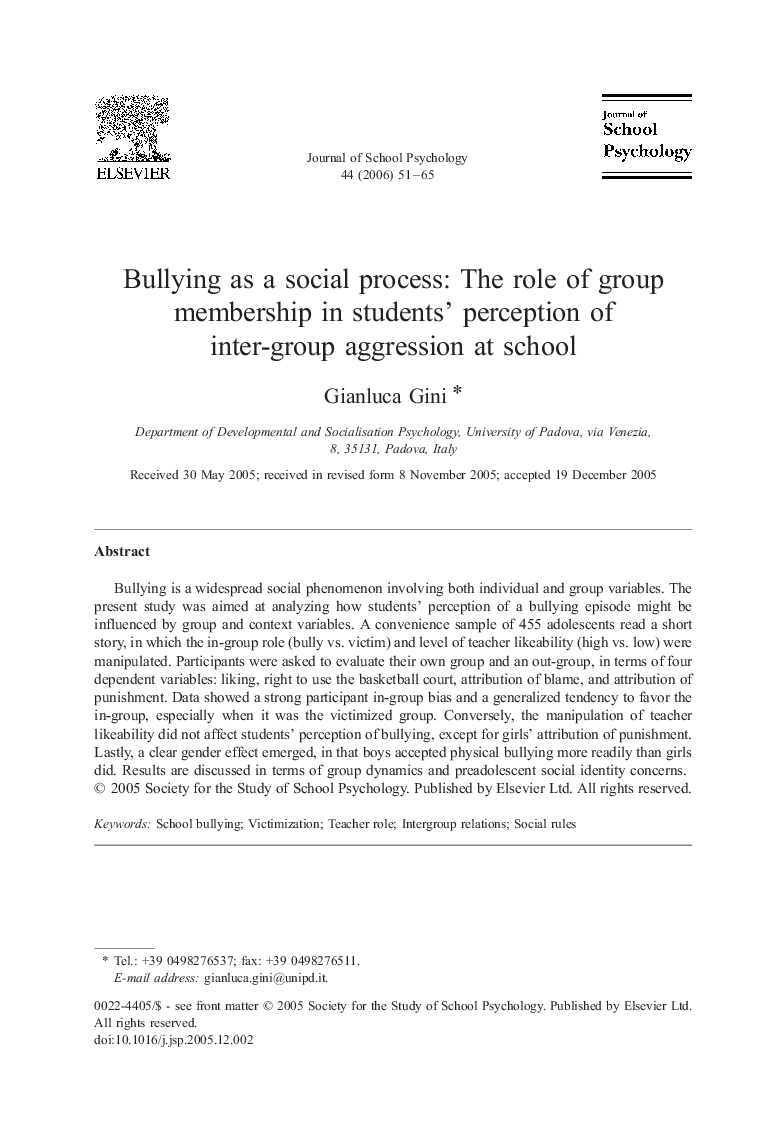| Article ID | Journal | Published Year | Pages | File Type |
|---|---|---|---|---|
| 363914 | Journal of School Psychology | 2006 | 15 Pages |
Bullying is a widespread social phenomenon involving both individual and group variables. The present study was aimed at analyzing how students' perception of a bullying episode might be influenced by group and context variables. A convenience sample of 455 adolescents read a short story, in which the in-group role (bully vs. victim) and level of teacher likeability (high vs. low) were manipulated. Participants were asked to evaluate their own group and an out-group, in terms of four dependent variables: liking, right to use the basketball court, attribution of blame, and attribution of punishment. Data showed a strong participant in-group bias and a generalized tendency to favor the in-group, especially when it was the victimized group. Conversely, the manipulation of teacher likeability did not affect students' perception of bullying, except for girls' attribution of punishment. Lastly, a clear gender effect emerged, in that boys accepted physical bullying more readily than girls did. Results are discussed in terms of group dynamics and preadolescent social identity concerns.
